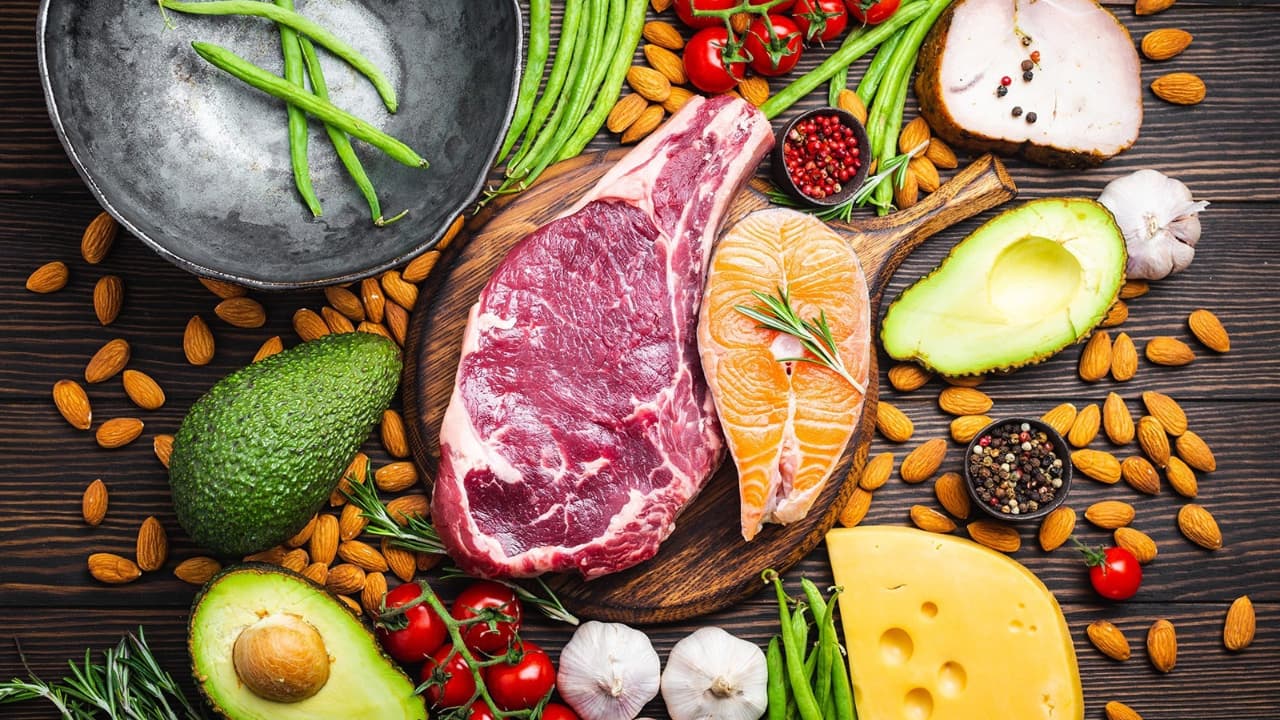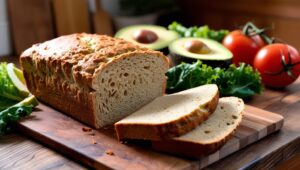Table of Contents
ToggleAre you ready to embark on a transformative journey towards better health and weight management? Look no further than the ketogenic diet, a low-carb, high-fat eating plan that’s taken the nutrition world by storm. In this comprehensive guide, we’ll unveil 25 essential keto foods that will help you thrive on this metabolic-shifting diet.
From nutrient-dense healthy fats to protein-packed meats and low-carb vegetables, we’ve got you covered. Whether you’re a keto newbie or a seasoned pro, you’ll discover:
• A diverse array of keto-friendly options to keep your meals exciting
• The nutritional benefits of each food and how they support ketosis
• Expert tips on incorporating these foods into your daily diet
• Strategies for overcoming common keto challenges
Ready to unlock the power of ketosis and revolutionize your eating habits? Let’s dive into the world of essential keto foods and set you on the path to success!
What’s the Keto Diet?
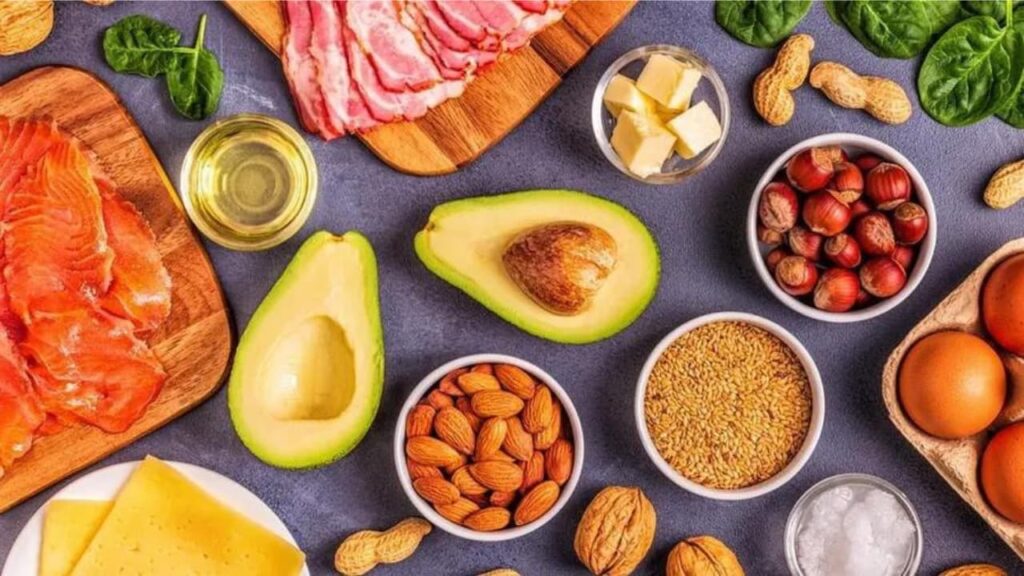
The ketogenic diet, or keto diet for short, has gained immense popularity in recent years. But what exactly is it?
At its core, the keto diet is a low-carb, high-fat eating plan designed to put your body into a metabolic state called ketosis.
In this state, your body becomes incredibly efficient at burning fat for energy. It also turns fat into ketones in the liver, which can supply energy for the brain.
Think of your body as a car. Normally, it runs on carbohydrates (gasoline). But when you drastically reduce carbs, it’s like switching to a different fuel source – fat (electricity).
The standard keto diet typically consists of:
– 70-80% fat
– 20-25% protein
– 5-10% carbohydrates
This is a significant shift from the typical Western diet, which is often high in carbohydrates.
By limiting carbs to around 20-50 grams per day, your body is forced to find alternative fuel sources. That’s where the magic of ketosis happens.
It’s important to note that the keto diet isn’t just about eating bacon and butter. A properly constructed keto diet food list includes a variety of nutrient-dense, whole foods.
💡 Key Takeaways: The keto diet is a low-carb, high-fat eating plan that aims to shift your body’s primary fuel source from carbohydrates to fat, inducing a state of ketosis for potential health benefits.
25 Essential Keto Foods
When embarking on a keto journey, knowing what to eat is crucial. Let’s explore 25 essential foods that form the backbone of a healthy ketogenic diet.
These foods span various categories, including healthy fats, proteins, low-carb vegetables, and more. Each plays a vital role in maintaining ketosis while providing essential nutrients.
In the following subsections, we’ll dive deep into each food category, discussing their benefits and how to incorporate them into your keto lifestyle.
Healthy Fats and Oils
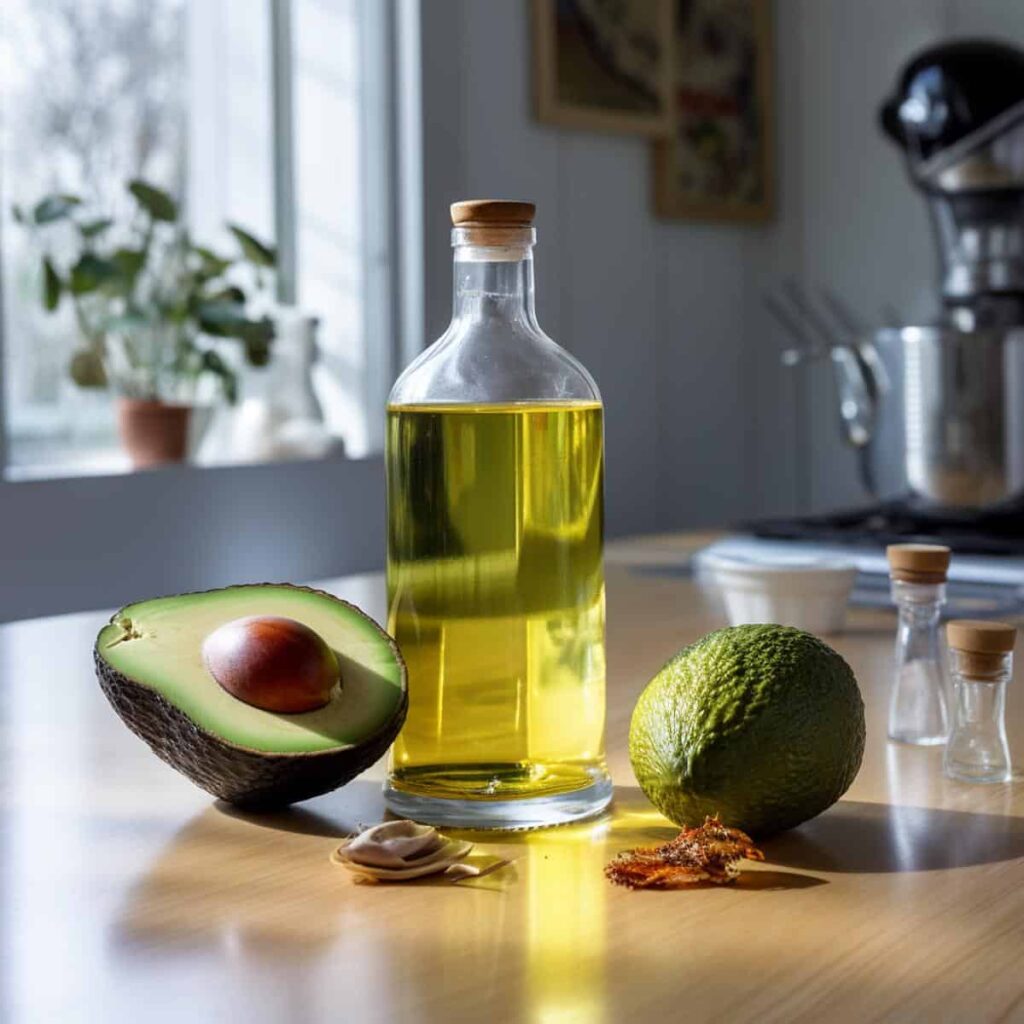
On a keto diet, fat is your friend. It’s the primary source of energy, so choosing the right fats is crucial.
1. Olive Oil: A staple in Mediterranean diets, olive oil is rich in heart-healthy monounsaturated fats. It’s perfect for salad dressings or low-heat cooking.
2. Coconut Oil: High in medium-chain triglycerides (MCTs), coconut oil can help boost ketone production. It’s great for cooking at high temperatures.
3. Avocado Oil: With a high smoke point, avocado oil is ideal for high-heat cooking. It’s also rich in monounsaturated fats.
4. Ghee: Clarified butter that’s lactose-free and rich in fat-soluble vitamins. It adds a delicious flavor to both savory and sweet dishes.
5. MCT Oil: Derived from coconut oil, MCT oil is rapidly absorbed and converted to ketones. It’s often added to coffee or smoothies.
Remember, while these fats are healthy, they’re still calorie-dense. Moderation is key to meeting your fat need without overdoing it.
💡 Key Takeaways: Healthy fats and oils are essential on a keto diet, providing energy and helping to maintain ketosis, but should be consumed in moderation due to their high calorie content.
Proteins: Meat, Poultry, and Seafood
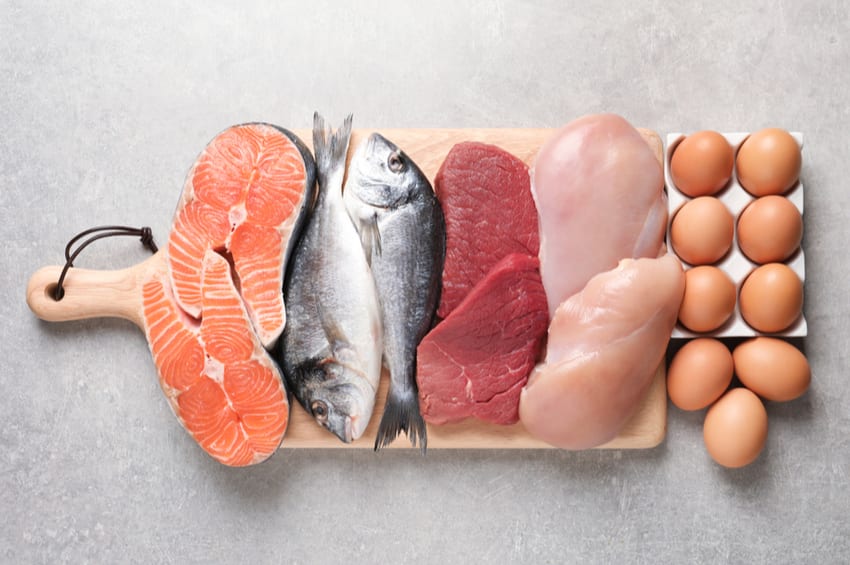
Protein is essential for maintaining muscle mass and overall health. On keto, moderate protein consumption is key.
1. Beef: Opt for grass-fed when possible. It’s rich in B vitamins, zinc, and iron.
2. Chicken: A versatile poultry product, chicken is a great source of protein and B vitamins.
3. Pork: From bacon to pork chops, it’s a keto-friendly option rich in thiamine.
4. Salmon: A fatty fish loaded with omega-3s and vitamin D. It’s one of the best keto-friendly seafood choices.
5. Tuna: Whether canned or fresh, tuna is high in protein and low in carbs.
6. Eggs: While not meat, eggs are an excellent protein source and incredibly versatile.
7. Turkey: Another poultry option that’s lean and protein-rich.
8. Lamb: Rich in B vitamins and zinc, lamb is a flavorful protein choice.
Remember to choose unprocessed meats and seafood whenever possible. These options are not only keto-friendly but also provide a wide array of essential nutrients.
💡 Key Takeaways: Proteins from meat, poultry, and seafood are crucial in a keto diet, providing essential nutrients while helping to maintain muscle mass, but should be consumed in moderation to maintain ketosis.
Low-Carb Vegetables
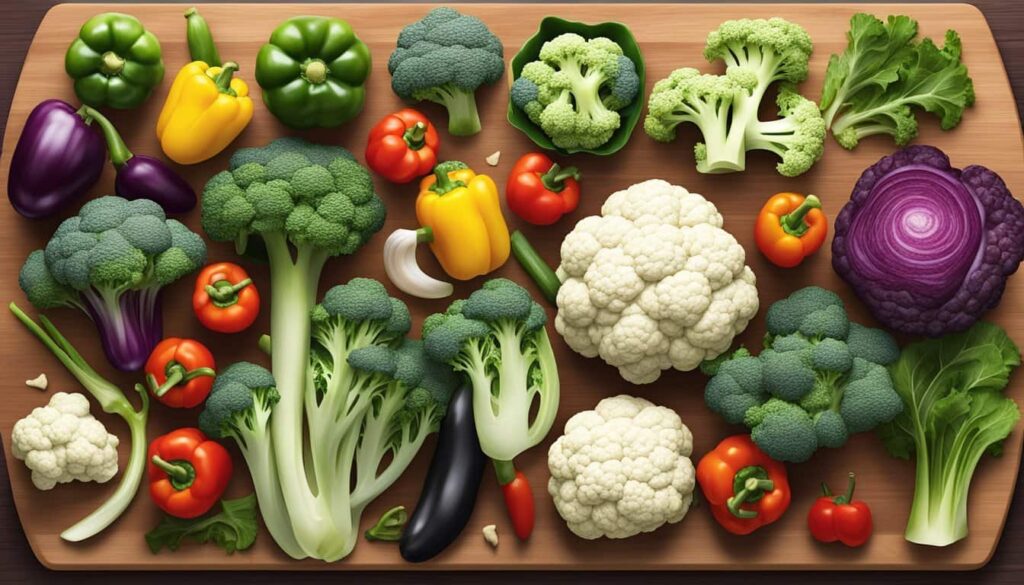
Vegetables are a crucial part of any healthy diet, including keto. The key is choosing low-carb options.
1. Spinach: Packed with iron and antioxidants, spinach is incredibly versatile.
2. Kale: A nutrient powerhouse, kale is rich in vitamins A, C, and K.
3. Broccoli: High in fiber and vitamin C, broccoli is a keto staple.
4. Cauliflower: A low-carb vegetable that can replace rice or potatoes in many dishes.
5. Zucchini: Often used as a pasta substitute, zucchini is low in carbs and high in vitamin C.
6. Bell Peppers: Colorful and crunchy, they’re rich in vitamin C and antioxidants.
7. Asparagus: Low in carbs and high in fiber, asparagus is a great side dish.
8. Mushrooms: Low in carbs and high in B vitamins, mushrooms add umami flavor to dishes.
These non-starchy vegetables are not only low in carbs but also high in fiber, which can help you feel full and satisfied.
Try roasting a mix of these veggies with olive oil and herbs for a delicious keto-friendly side dish.
💡 Key Takeaways: Non-starchy, low-carb vegetables are essential in a keto diet, providing necessary nutrients and fiber while keeping carbohydrate intake low.
Keto-Friendly Fruits
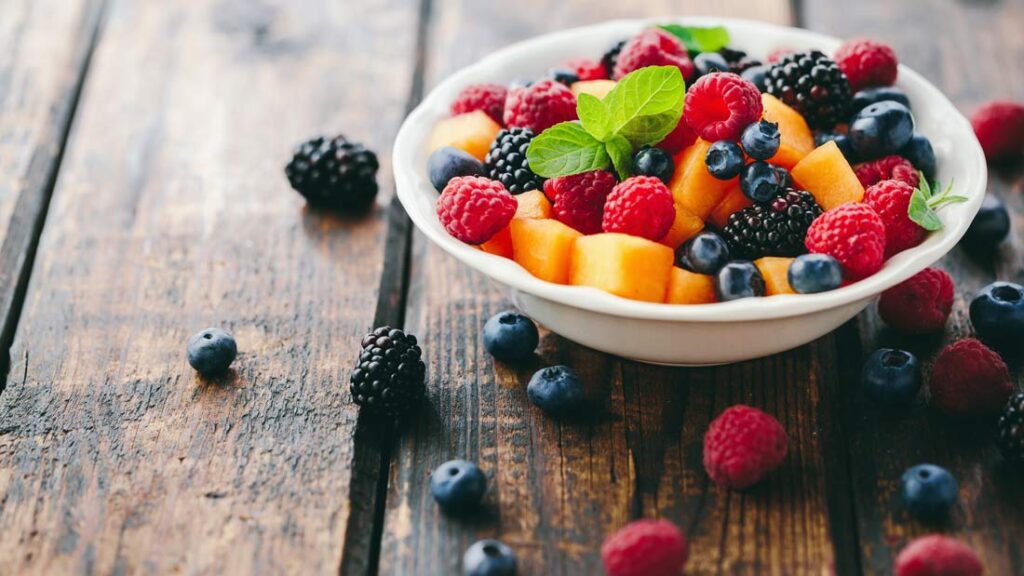
While many fruits are high in carbs, there are some low-carb fruits that can fit into a keto diet.
1. Berries: Strawberries, raspberries, and blackberries are lower in carbs compared to other fruits.
2. Avocado: Technically a fruit, avocados are high in healthy fats and low in carbs.
3. Olives: Another fruit that’s high in healthy fats and low in carbs.
4. Tomatoes: In small amounts, tomatoes can fit into a keto diet.
5. Lemons and Limes: Used for flavoring, these citrus fruits are low in carbs.
Remember, even these low-carb fruits should be consumed in moderation on a keto diet. A handful of berries can be a perfect sweet treat without derailing your progress.
💡 Key Takeaways: While most fruits are too high in carbs for a keto diet, certain low-carb fruits like berries and avocados can be enjoyed in moderation.
Full-Fat Dairy Products
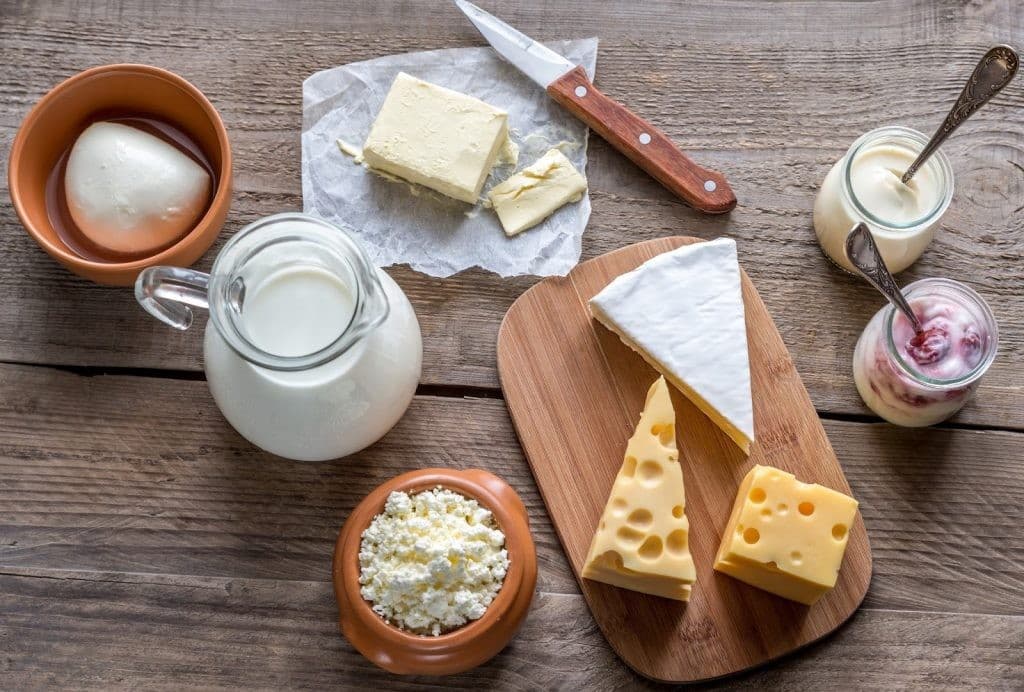
Dairy can be a part of a keto diet, but it’s important to choose full-fat options.
1. Cheese: From cheddar to mozzarella, cheese is high in fat and low in carbs.
2. Heavy Cream: Perfect for adding richness to coffee or sauces.
3. Greek Yogurt: Choose full-fat, plain varieties for the lowest carb count.
4. Butter: A staple in many keto kitchens, butter adds flavor and fat to dishes.
5. Sour Cream: Another higher-fat dairy product that’s low in carbs.
When selecting dairy products, always opt for full-fat versions. Low-fat or fat-free products often have added sugars to compensate for flavor.
For example, using heavy cream in your morning coffee instead of milk can help increase your fat intake while keeping carbs low.
💡 Key Takeaways: Full-fat dairy products can be included in a keto diet, providing essential nutrients and healthy fats, but should be consumed mindfully due to their calorie density.
Nuts and Seeds
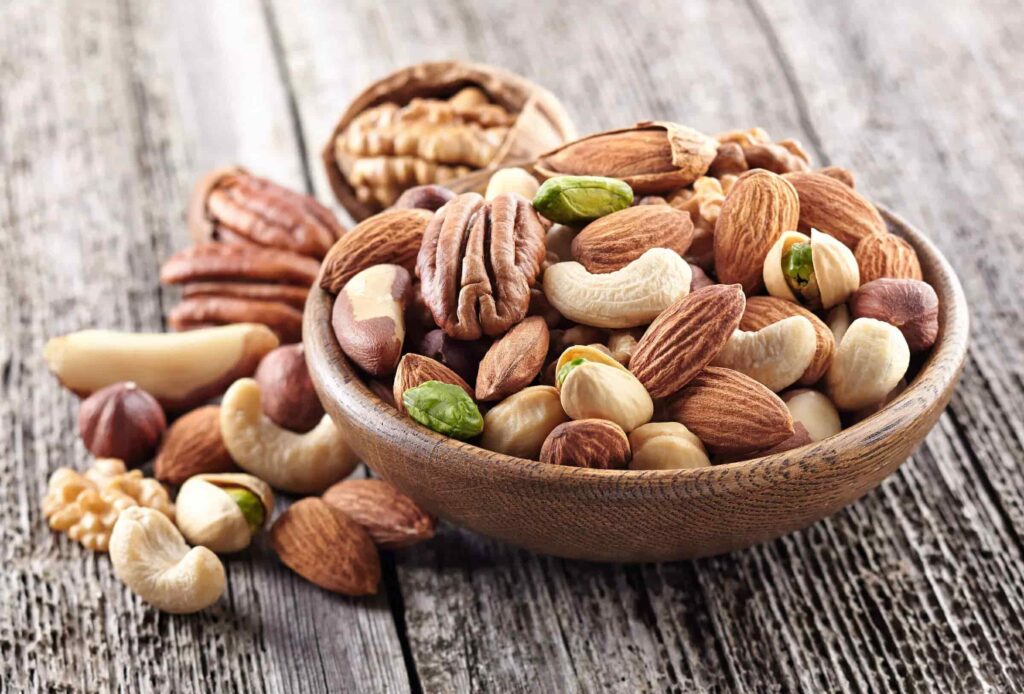
Nuts and seeds are nutrient powerhouses that can add crunch and flavor to your keto meals.
1. Almonds: High in vitamin E and magnesium.
2. Macadamia Nuts: One of the highest fat, lowest carb nuts.
3. Walnuts: Rich in omega-3 fatty acids.
4. Pumpkin Seeds: High in zinc and iron.
5. Chia Seeds: Packed with fiber and omega-3s.
6. Flaxseeds: Another great source of omega-3s and fiber.
7. Pecans: Low in carbs and high in healthy fats.
These nuts and seeds are not only keto-friendly but also provide essential nutrients like vitamin E, magnesium, and healthy fats.
Try sprinkling a mix of these over a salad or enjoying a small handful as a snack. Just remember to watch portion sizes, as the calories can add up quickly.
💡 Key Takeaways: Nuts and seeds are excellent sources of healthy fats and essential nutrients on a keto diet, but should be consumed in moderation due to their calorie density.
Eggs

Eggs are a keto superstar, packed with nutrients and incredibly versatile.
They’re an excellent source of protein and contain almost zero carbohydrates. Eggs are also rich in B vitamins, particularly B12, which is crucial for nerve function.
Moreover, eggs provide essential vitamins like A, D, E, and K. They’re also one of the few food sources of choline, important for brain health.
Whether scrambled, boiled, or made into an omelet, eggs can be enjoyed at any meal on a keto diet.
💡 Key Takeaways: Eggs are a nutrient-dense, versatile food that’s perfect for a keto diet, providing high-quality protein and essential vitamins with virtually no carbs.
Dark Chocolate and Cocoa Powder
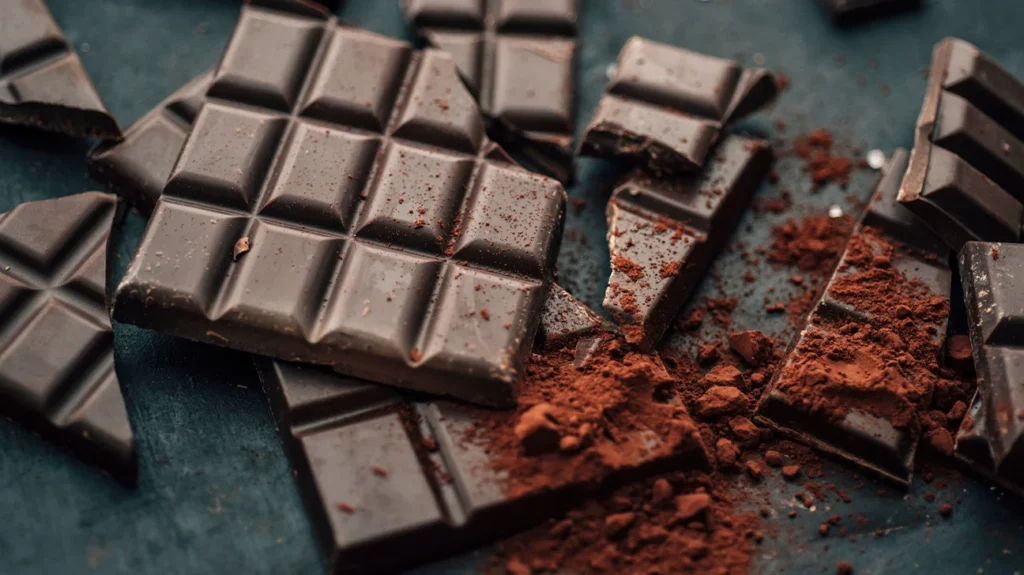
For those with a sweet tooth, dark chocolate and cocoa powder can be keto-friendly options.
Opt for dark chocolate with at least 70% cocoa content. The higher the percentage, the lower the sugar content.
Cocoa powder is even lower in carbs and can be used to add a chocolatey flavor to keto desserts or smoothies.
Both dark chocolate and cocoa are rich in antioxidants and have a more natural sweet taste compared to milk chocolate.
Enjoy a small square of dark chocolate as an occasional treat, or use cocoa powder to make a rich, keto-friendly hot chocolate.
💡 Key Takeaways: Dark chocolate and cocoa powder can satisfy sweet cravings on a keto diet when consumed in moderation, offering antioxidants and a natural sweet taste.
Beverages

Staying hydrated is crucial on any diet, including keto. Here are some keto-friendly beverage options:
1. Water: The best choice for hydration, with zero g of carbohydrate.
2. Coffee: Black coffee is carb-free and can boost metabolism.
3. Tea: Unsweetened tea, whether green, black, or herbal, is keto-friendly.
4. Bone Broth: Rich in minerals and collagen, with minimal carbs.
5. Sparkling Water: A great alternative to soda, with no carbs or calories.
Remember to avoid sugary drinks and fruit juices, which are high in carbs. If you need to add sweetness, consider using a keto-friendly sweetener.
💡 Key Takeaways: Water, unsweetened coffee and tea, bone broth, and sparkling water are excellent beverage choices on a keto diet, providing hydration without adding carbs.
Condiments and Seasonings

Flavor is key to enjoying your keto meals. Here are some keto-friendly condiments and seasonings:
1. Salt: Essential for maintaining electrolyte balance on keto.
2. Pepper: Adds flavor without carbs.
3. Herbs: Fresh or dried herbs like basil, oregano, and thyme are carb-free.
4. Spices: Most spices are low in carbs and high in flavor.
5. Vinegar: Apple cider vinegar and red wine vinegar are low-carb options.
6. Mustard: Most types are low in carbs, but check labels for added sugars.
7. Hot Sauce: Many varieties are low in carbs, but again, check labels.
8. Mayonnaise: Choose full-fat versions without added sugars.
9. Soy Sauce: Use in moderation due to high sodium content.
10. Lemon Juice: Adds brightness to dishes with minimal carbs.
These condiments and seasonings can transform simple keto meals into flavorful feasts. For example, try marinating chicken in a mixture of olive oil, lemon juice, and herbs before grilling.
Be cautious with store-bought dressings and sauces, as many contain added sugars. It’s often better to make your own using keto-friendly ingredients.
💡 Key Takeaways: A wide array of keto-friendly condiments and seasonings can enhance the flavor of your meals without adding significant carbs, but always check labels for hidden sugars.
Get you free keto cookbookand Try lots of delicious and varied recipes.
Nutritional Benefits of Keto Foods

The foods recommended on a ketogenic diet aren’t just low in carbs – they’re also packed with essential nutrients that offer numerous health benefits.
Rich in Healthy Fats
Keto foods are typically high in healthy fats, particularly monounsaturated and saturated fats. These fats are crucial for:
1. Hormone production
2. Cell membrane integrity
3. Absorption of fat-soluble vitamins (A, D, E, K)
For example, avocados and olive oil are rich in monounsaturated fats, which have been linked to improved heart health.
High-Quality Protein Sources
The protein sources in a keto diet, such as eggs, fish, and meat, provide all essential amino acids. These are crucial for:
1. Muscle maintenance and growth
2. Enzyme and hormone production
3. Immune function
Salmon, for instance, is not only high in protein but also rich in omega-3 fatty acids, which have anti-inflammatory properties.
Low-Carb Vegetables for Fiber and Micronutrients
While the keto diet is low in carbs, it encourages the consumption of low-carb vegetables. These are important for:
1. Fiber intake, supporting digestive health
2. Providing essential vitamins and minerals
3. Delivering antioxidants to combat oxidative stress
Spinach, for example, is low in carbs but high in iron, calcium, and vitamins A and C.
Blood Sugar Management
By limiting carbohydrate intake, the keto diet can help stabilize blood sugar levels. This can be particularly beneficial for people with type 2 diabetes or insulin resistance.
Potential Cognitive Benefits
Some studies suggest that the ketones produced during ketosis may have neuroprotective properties, potentially benefiting brain health.
💡 Key Takeaways: Keto foods offer a range of nutritional benefits beyond just being low in carbs, including healthy fats, high-quality proteins, essential micronutrients, and potential advantages for blood sugar management and cognitive health.
Foods to Limit or Avoid on Keto

While the keto diet is rich in many foods, there are certain items you’ll need to limit or avoid to maintain ketosis.
High-Carb Foods
These foods are typically off-limits on a keto diet:
1. Grains: Wheat, rice, oats, corn
2. Starchy vegetables: Potatoes, sweet potatoes, carrots
3. Legumes: Beans, lentils, chickpeas
4. Most fruits: Except for small portions of berries
Sugary Foods and Beverages
Any food high in sugar should be avoided:
1. Soda and fruit juices
2. Candy and chocolate (except very dark chocolate)
3. Ice cream and other sweet desserts
4. Honey, agave nectar, and maple syrup
Processed Foods
Many processed foods contain hidden carbs and unhealthy additives:
1. Chips and crackers
2. Baked goods
3. Most packaged snacks
Alcohol
While some alcoholic beverages can fit into a keto diet, many are high in carbs:
1. Beer
2. Sweet wines
3. Cocktails with sugary mixers
Remember, even small amounts of these high-carb foods can kick you out of ketosis. It’s crucial to read labels and be aware of hidden carbs in foods and drinks.
For example, a single banana contains about 27g of carbs, which could be more than your entire daily carb allowance on a strict keto diet.
💡 Key Takeaways: To maintain ketosis, it’s essential to avoid high-carb foods, sugary items, most processed foods, and high-carb alcoholic beverages, as even small amounts can significantly impact your carb intake.
Meal Planning and Preparation
Successful adherence to a keto diet often comes down to effective meal planning and preparation.
Conclusion
Embarking on a ketogenic journey can be both exciting and challenging. With this comprehensive guide to 25 essential keto foods, you’re now equipped with the knowledge to make informed choices and thrive on a low-carb diet. Remember, the key to success lies in variety, balance, and mindful eating. By incorporating these nutrient-dense options into your meal plan, you’ll not only support your weight loss goals but also potentially improve your overall health and well-being.
As you navigate your keto journey, don’t forget to listen to your body and adjust your approach as needed. Stay committed to tracking your carb intake, experimenting with new recipes, and staying hydrated. With patience and persistence, you’ll soon discover the transformative power of the ketogenic lifestyle.
We hope this guide has inspired you to embrace the keto diet with confidence. Here’s to your health, vitality, and success on your low-carb adventure!

